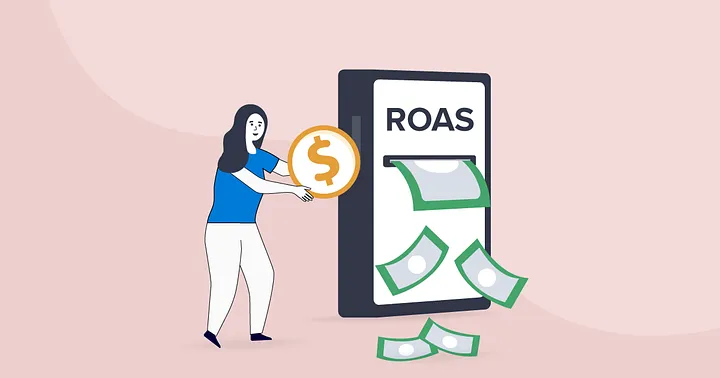Stop chasing vanity metrics — focus on goals that truly matter.
In 2024, our campaign video went viral.
We got 1,000,000 views overnight. It was a feat that was never achieved in my entire time in my company — so you bet we celebrated.
And then reality hit.
Sales? Barely moved.
Website traffic? A temporary uplift, then right back to normal.
Customer retention? Unchanged.
Turns out, virality doesn’t pay the bills.
That was my wake-up call. I had been tracking the wrong things — chasing big numbers that looked fantastic on reports but didn’t really drive business growth.
It was a harsh lesson no doubt, but it forced me to rethink what really matters in marketing.
So I decided to strip away the fluff and focused only on the four metrics that actually move the needle.
The ones that dictate whether your marketing is working — or just making noise.
Because in 2025, attention isn’t enough anymore.
If it’s not converting, retaining, or growing your brand in a meaningful way, it’s just another vanity metric.
Let’s talk about the only four numbers you should be focusing on this year:
Metric #1: Return on Ad Spend (ROAS)

The only metric that tells you if your ads are working
Anyone who’s been in marketing knows this: spending money on ads has never been easier.
One click, and you’re reaching thousands.
But here’s the real question: are you making more than you spend?
ROAS is the one number that answers this.
If you’re spending $10,000 on ads but only making $5,000 back, it doesn’t matter how good your CTR is — you’re losing money.
How to calculate it:
ROAS = Revenue from ads ÷ Ad spend
Example: Spend $1,000, and generate $4,000 in sales — your ROAS is 4.0 (or 400%). Anything above 4 is great.
I once ran a campaign that looked successful — high engagement, and strong CTRs.
But when we checked the numbers? A pathetic 0.8 ROAS.
Translation? We were paying for every sale. Not sustainable.
How to fix a bad ROAS:
- Optimize your targeting — If you’re reaching the wrong people, no wonder they’re not converting. Get to know your target customer properly.
- Refine your offer — No budget can fix a bad product-market fit. It all starts with the product.
- Track beyond last-click attribution — Customers may convert through other channels later. Make sure every sales channel is tracked.
Bottom line: If your ROAS isn’t profitable, your ads aren’t working.
The only exception? Launching a new product. Short-term losses are fine for awareness but never long-term.
Metric #2: Customer Acquisition Cost (CAC)

Because growth isn’t worth it if you’re bleeding money.
I’ll let you in on a hard truth.
Marketing isn’t about gaining new customers — it’s about gaining them profitably.
One of the best ways to check if you’re doing that? CAC (Customer Acquisition Cost).
Because let’s face it: if you’re spending $50 to acquire a customer who only brings in $40, you’re running a charity, not a business.
How to calculate it:
CAC = Total marketing & sales spend ÷ Number of new customers acquired
Example: If you spend $10,000 and acquire 500 new customers, your CAC is $20 per customer.
I once ran an aggressive paid campaign that brought in a flood of new users. On the surface, it looked like a huge win.
Until we checked the CAC.
Turns out, we were paying more to acquire customers than they were spending. Ouch.
How to fix a bad CAC:
- Improve conversion rates — If you’re paying for clicks that don’t convert, fix the leak in your funnel.
- Retarget & upsell — Lower CAC by reaching out to existing customers. A great way to do so is through retargeting ads.
- Optimize organic channels — Paid ads are great, but SEO, referrals, and word-of-mouth are free. Make use of them smartly and you won’t have to fork out as much anymore.
Bottom line: Growth is meaningless if CAC is higher than what a customer brings in.
Metric #3: Engaged Follower Percentage

Because follower count means nothing without engagement
I still vividly remember the day our brand account got our first 1,000 followers.
We were over the moon. “A thousand followers? That means a thousand new customers, right?”
We couldn’t be more wrong.
Weeks passed, and despite our growing follower count, our posts were getting almost zero likes, comments, or shares.
Turns out, a big number next to your username means nothing if no one actually cares about your content.
How to calculate it:
Engaged Follower Percentage = (Total engagements ÷ Total followers) × 100
Example: If you have 10,000 followers but only get 100 likes, comments, and shares per post, your engagement rate is 1% — which is definitely not amazing.
I’ve seen brands with millions of followers that can barely break 1% engagement.
Why? Because they chased vanity over value.
Buying followers, running mass giveaways, and prioritizing quantity over quality will get you an inflated number but no real interaction.
How to fix bad engagement:
- Post content that actually resonates — If no one’s engaging, you’re probably posting what you want, not what they want. Think about their deepest pain points, and address them in your content.
- Encourage interaction — Ask questions, run polls, reply to comments — make engagement a two-way street. And never forget to answer all DMs.
- Clean up ghost followers — If bots and inactive users make up a chunk of your audience, remove them.
Bottom line: 10,000 engaged followers are worth more than 100,000 passive ones. Engagement drives sales, not just numbers.
Metric #4: Organic vs. Paid Traffic Ratio

Because you can’t rely on ads forever
Paid ads are great.
They get your brand in front of the masses quickly and reliably — and usually at a pretty decent cost, too.
But relying too much on ads can be risky for your brand.
What happens when CPMs skyrocket?
When ad platforms tweak their algorithms overnight?
In other words: If all your traffic comes from paid ads, your business is standing on rented land.
How to calculate it:
Organic vs. Paid Traffic Ratio = (Organic traffic ÷ Total traffic) × 100
Example: If your website gets 10,000 visitors a month and 6,000 come from organic sources (SEO, direct visits, social shares), your ratio is 60% organic — a strong sign of brand stability.
A healthy 60:40 organic-to-paid ratio (or better) means your brand isn’t completely dependent on ad spend.
The higher your organic percentage, the more sustainable your growth.
How to improve organic traffic:
- Invest in SEO — Optimize for search so people find you without ads.
- Build a strong content game — Blog posts, videos, UGC — whatever keeps people coming back.
- Leverage word-of-mouth — If people love your brand, let them do the marketing for you. Better yet, set up a loyalty program that incentivizes them every time they speak well of you.
Bottom line: Ads are a tool, not a lifeline. If your business can’t survive without them, you don’t have a brand — you have a dependency.
Conclusion
Marketing isn’t about chasing big numbers — it’s about tracking the right ones.
If a metric doesn’t directly impact sales, retention, or growth, it’s just noise.
Focus on these four, and you’ll stop playing the vanity game and start driving real business results.




